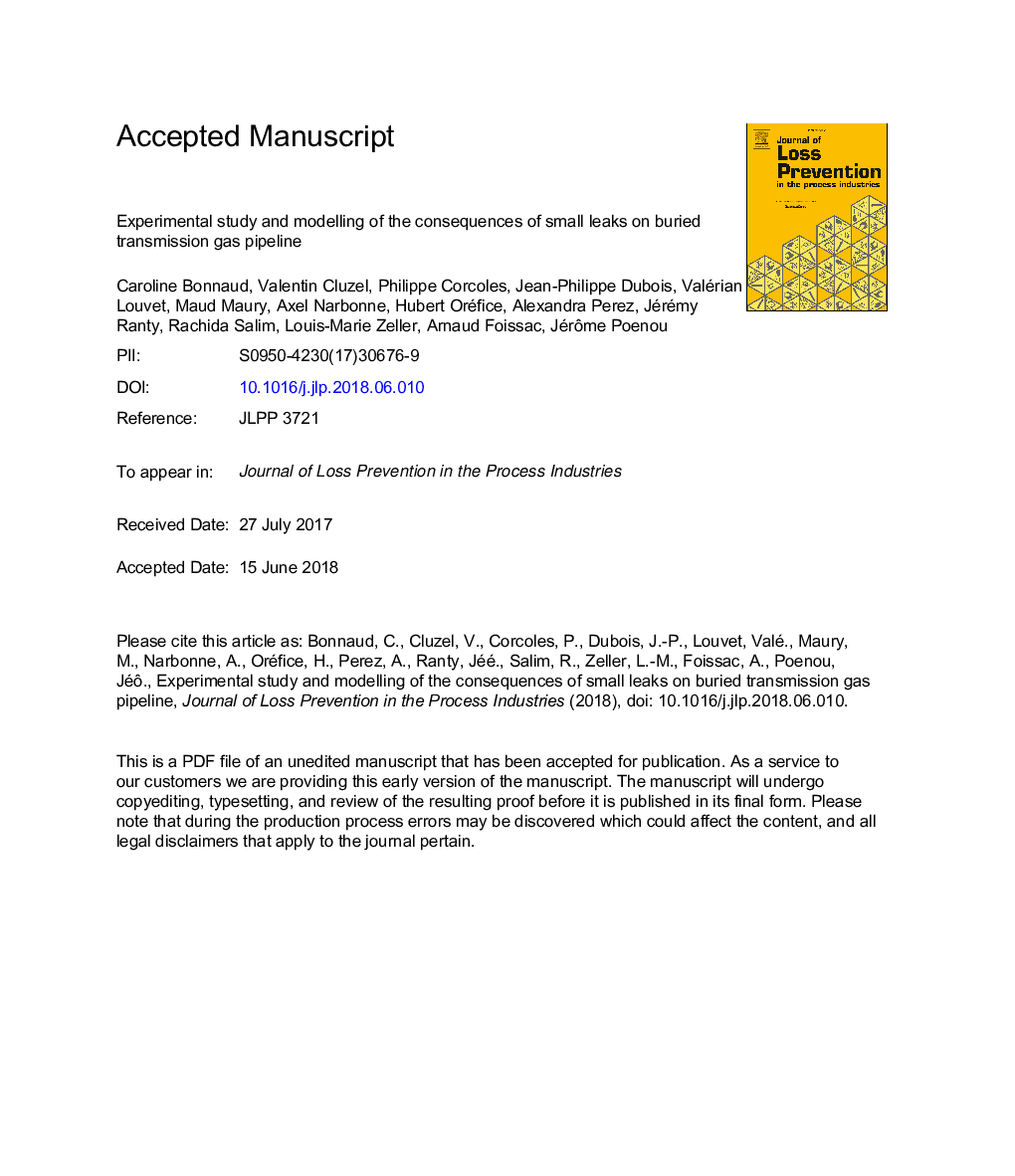| Article ID | Journal | Published Year | Pages | File Type |
|---|---|---|---|---|
| 6972800 | Journal of Loss Prevention in the Process Industries | 2018 | 18 Pages |
Abstract
Operators of gas infrastructures, such as gas pipelines or gas storages, have to ensure safety for employees as well as third parties in the surroundings of installations. For this purpose, risk analysis are performed to assess the level of risk for a given installation. Safety partnerships have been launched to carry out experimental and theoretical studies, for instance to assess the outcome of a leak occurring on a buried pipeline. A previous work performed by ENGIE, Air Liquide, TIGF, National Grid and Petrobras has focused on a nearly-real scale, simulated leak on a pipeline at 1â¯m depth with a 12â¯mm diameter breach. However, the number of tests was not sufficiently high to be able to assess the influence of all parameters such as leak diameter, pressure, pipe depth, soil type, water content etc. Different phenomena like gas migration in the soil, uplift or crater formation may occur. The objectives of this work were to experimentally study the influence of these different parameters on the release outcome. Small scale experiments have been conducted and more than a hundred trials have led to identify empirical transitions between the different outcomes. Moreover, new phenomena occurring in the ground have been highlighted, such as cavities formation, where gas may accumulate, or also, the drying and the freezing of the soil surrounding the leak.
Related Topics
Physical Sciences and Engineering
Chemical Engineering
Chemical Health and Safety
Authors
Caroline Bonnaud, Valentin Cluzel, Philippe Corcoles, Jean-Philippe Dubois, Valérian Louvet, Maud Maury, Axel Narbonne, Hubert Orefice, Alexandra Perez, Jérémy Ranty, Rachida Salim, Louis-Marie Zeller, Arnaud Foissac, Jérôme Poenou,
